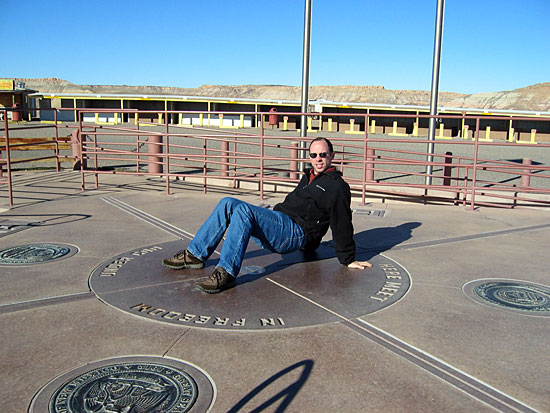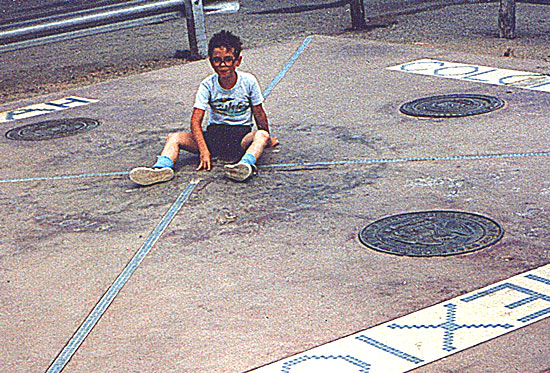January 28, 2004
Four Corners Then and Now
Back on our southwest road trip, we stopped at the Navajo Fry Bread National Monument.

Actually, it's the Four Corners National Monument, which is on Navajo land, and at which we spent more time waiting for and eating fry bread than we did viewing the monument.
Anyway, my parents dug up a picture of me at the same site 23 years earlier.

Designing for People - Chapter 3: How The Designer Works
In this chapter, Dreyfuss lays out his process for designing products. What's most intriguing is how what he writes is pretty much a summary of the two-day workshop my company teaches on design methodology. Everything old is new again.
The best overview is this photo spread showing how they addressed the design of a new vacuum cleaner for Hoover.
He discusses the need to meet with stakeholders, to conduct a competitive analysis, to understand the capabilities of the equipment, and to begin with sketches and then iterate the design in increasing levels of fidelity.
He stresses developing a close co-operation with the engineers, and how they're able to utilize the same common denominator -- Joe and Josephine. What was that about how personas can help an entire team rally behind a design goal?
Dreyfuss designs for the complete customer experience:
If the product is to be packaged, we design the conatiner, carton, and price tag. Occasionally we have designed the truck that delivers it. We interest ourselves in these matters because they complement the product. In certain merchandise they create the invaluable first impression in the mind of the customer which leads to ultimate purchase.
Dreyfuss points out that in the early days of industrial design, engineers regarded designers as "intruder[s] who [were] after their jobs." I can say that, without reservation, the same is true in the early days of information architecture and user experience design.
He also allows himself to grouses about the term "industrial design."
The word "design" is certainly not the exclusive property of the industrial designer. Its dictionary meaning, "to contrive for a purpose," makes it equally the property of engineers, architects, advertising men, artists, and dressmakers. The qualifying word "industrial" doesn't pin it down precisely either. But it's too late to try to coin a substitute..
As someone who has watched his profession generate a lot of heat, and little light, around terminologies and definitions, I think we ought to follow Dreyfuss' lead, and just accept it and move on.
There are two points he addresses that I think user experience folk would do well to heed. The first is the tight co-operation between designers and engineers. In my experience, this pretty much doesn't occur. Design and engineering is mediated by product management, who hand the specifications developed by designers to the engineers, and that's pretty much that. Back in the olden days, when I was a wee web developer, I made sure to work closely with designers so that they knew the capabilities of the web medium -- it's limitations and its opportunities. This collaboration lead to innovative solutions that truly took advantage of the medium. It's sad this this approach seems to have, by and large, fallen by the wayside, as companies wall-off their various disciplines.
The second point he addresses is for the designer to develop ever-more-high-fidelity models. In my experience, this, too, doesn't happen. Interaction designers come up with wireframes. Visual designers create final "looking" designs. But these are all static creations.
We get closer when we prototype in HTML, and perhaps even closer when we use JavaScript to 'fake' server-side interactivity. But we really ought to strive for prototype environments that are fed real-live actual data, but which still maintain the flexibility and iteratibility of HTML markup.

